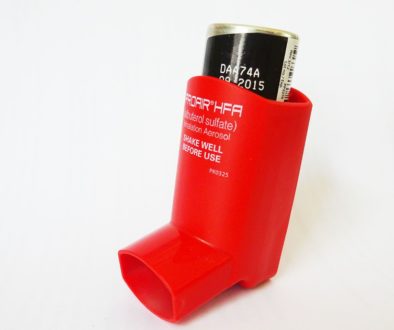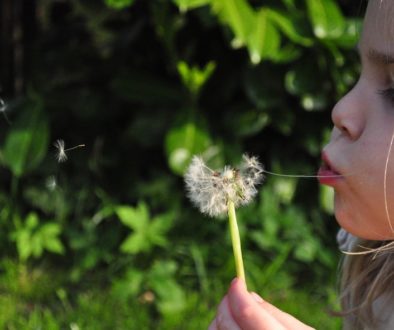The Ultimate Teething Guide
 “So deadly has teething become, that one third of the Human family die before the twenty deciduous teeth have fully appeared.” – Dr. M Thrasher, 1894, Dental Cosmos
“So deadly has teething become, that one third of the Human family die before the twenty deciduous teeth have fully appeared.” – Dr. M Thrasher, 1894, Dental Cosmos
For as long as we’re able to trace back in human history, teething has been thought to be the cause of a variety of illnesses. Fever, diarrhea, seizures, vomiting, paralysis, and even death were all thought to be caused by teething. In 1839, 5016 total deaths in England were said to be a result of teething. In 1842, 4.8% of all infant deaths in London were attributed to teething. Even as late as 1910, 1600 deaths in England and Wales were listed as caused by teething. Amazing right?
We’re a little better educated today but many myths about teething still remain and continue to be spread. Before we get to those myths, let’s learn a bit more about teething…
What Is Teething?
Teething is the process by which children’s first set of baby (deciduous) teeth erupt through the gums and into the mouth. Children’s first teeth start forming quite early in the womb and are already quite well developed under the gumline before they are even born. As they continue to develop they start to push upward through the jaw bones and gum tissue until they eventually erupt into the mouth.
When Does Teething Occur?
Teething is a highly variable process. On average it starts around age 6 months and continues until the child is approximately three years old. Some children start teething as early as 2-3 months while others don’t start until they are over a year old. These variations are quite normal and don’t indicate anything wrong with the child one way or another in most cases. In very rare cases, delayed teething can be the sign of certain health conditions including hypopituitarism, hypothyroidism, infantile rickets, Down’s Syndrome, cleidocranial dysostosis, osteopetrosis, Gardener’s syndrome and achondroplastic dwarfism.
Here are some rough ranges of when specific teeth come in. Not all children will follow this exact pattern.
- Lower central incisors 5–7 months
- Upper central incisors 6–8 months
- Upper lateral incisors 9–11 months
- Lower lateral incisors 10–12 months
- First molars 12–16 months
- Canines 16–20 months
- Second molars 20–30 months
Common Symptoms Associated With Teething
Teething can cause some specific problems with children, just not as many as people commonly believe. Most of the symptoms associated with teething are a direct result of the moderate discomfort that occurs when they start to come in. Also, most teeth symptoms start 3-5 days before the tooth erupts into the mouth and go away quickly after it has done so.
- Gum swelling and tenderness
- Excessive drooling
- Chewing of fingers and toys
- Irritability
- Night crying
- Poor appetite
- Rash around the mouth
Health Problems Commonly Associated With Teething That Actually Aren’t
There are quite a few childhood illnesses and diseases that continue to be blamed on teething. Here are the most common ones that actually have nothing to do with teething…
- Fever – This is the most common one I hear from parents. There is some evidence that a child’s temperature will go up very slightly (0.1 degrees on average) while teething, however, it does not increase to anywhere near the level of a fever.
- Diarrhea – Again, all the studies have shown no correlation with diarrhea and teething.
- Pulling on the ears. – Pulling on the ears is far more likely to be related to an ear infection or nothing at all rather than related to teething pain.
- Diaper rash
Unusual Teething Situations
There are a couple of situations with teething that can cause some unusual things to occur.
Eruption cysts – Occasionally when a tooth is breaking through the gums, it will develop a large discolored swelling above it. This is known as an eruption cyst. Most of the time this will resolve on it’s own once the tooth has pushed through far enough. If an eruption cyst is causing significant pain or difficulty in chewing and eating, a dentist or physician can make a small incision in it which will allow it to decompress and go away more quickly.
Natal or neonatal teeth – Natal teeth are present when the child is born and neonatal teeth erupt in the first month of life. Sometimes these teeth are extra and sometime they are the actual baby tooth for that specific spot that has just come in early. If they pose a problem for nursing, sometimes they are removed, especially if they are extra teeth.
Treating Teething Symptoms
Before modern medicine came along, there were quite a few unusual treatments for teething. These included rubbing rabbit or lambs brains on their gums, dogs milk, bloodletting, opium syrup, leeches behind the ears, whiskey on the gums, and lancing the gums over and over again. Aren’t you glad we know better now?
Treatment for teething is mostly aimed at making the child more comfortable. Some things you can do to help (in order from most to least helpful) include…
- Cold teething toys that the child can gnaw on. Get a stash of these and keep them in the freezer until your child needs them. Frozen vegetables such as carrots also work very well.
- Over the counter pain medications. Tylenol and Ibuprofen are the most common.
- Topical anesthetics such as Anbesol that can be rubbed on the gums to provide some temporary numbing.
A couple of things you definitely shouldn’t do include…
- Giving a young child aspirin can cause a very serious reaction known as Reyes Syndrome. Stick to Tylenol or Ibuprofen.
- Whiskey or any other alcohol on the gums. There really isn’t a safe amount of alcohol to expose a child to.
- Give them a teething necklace that can break apart and choke them.
- Use too much numbing gel. The numbing gel is absorbed through their gums and can lead to a dangerous overdose in high amounts.
With teething, it is best to remember that this a perfectly natural process that everyone goes through. In many cases less is more. A cold teething toy is the best and least dangerous way to help ease your child’s teething pain. It also doesn’t carry any of the risk that goes along with giving medications to a young child.
Many thanks to this publication from the British Dental Journal for providing many of the specific quotes and details about teething!




January 17, 2017 @ 4:10 am
Really interesting information! My friends always warned me that my kids would get fever and diarrhea when they were teething and I didn’t know what to believe!